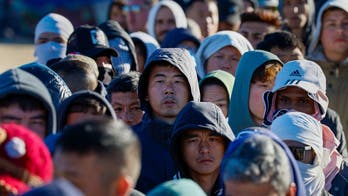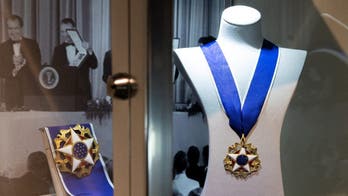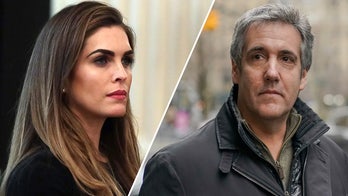Larry Sabato on what the presidential pollsters missed
Reaction from the director of the University of Virginia's Center for Politics
In the cornucopia of pro-Clinton polling that preceded the 2016 presidential election, two polls stood out as outliers: the USC/LA Times tracking poll and the Investor's Business Daily/TIPP tracking poll.
Both polls attempted to measure the national popular vote, but wound up capturing the scale of Donald Trump's victory in the Electoral College.
"As far as I was concerned, I was anticipating a Trump win," said Raghavan Mayur, President of TechnoMetrica Market Intelligence, which conducts the IBD/TIPP poll. The final poll, released on Election Day, showed Trump with a two-percentage point lead over Democrat Hillary Clinton.
Mayur compared Tuesday's election to 2004, when enthusiasm among Republicans helped George W. Bush get re-elected president despite exit polls favoring then-Sen. John Kerry. He also saw "very robust enthusiasm" for Trump among independents, which canceled out the registration advantage held by Democrats.
"Since Sept. 1, the number of Republicans [in the poll sample] was much higher than the number of Democrats," Mayur said. "It was a new phenomenon in the data [and] I was not sure what is happening here."
"Day after day, I was weighing down Republicans until the final four or five days [of the race]," Mayur continued. "What I am seeing is ... a good amount of enthusiasm ... so I was going to predict who would show up."
"Polling is as much an art as science," said IBD Commentary Editor Terry Jones. "It requires judgement ... [Mayur] sort of sensed this move and our polling responded to great enthusiasm.
"If you turn [voters] out, you'll get them enthused, and last night we saw that."
The USC/LA Times tracking poll, notable for interviewing the same 3,200 respondents over a period of several months, gave Trump a 3.2-percentage point lead the day before the election. Since it premiered in early July, the poll results were about six percentage points more favorable to the real estate mogul than the national average.
"To be honest, I was surprised," University of Southern California economist Arie Kapteyn, who developed the poll, told the Los Angeles Times. "I thought Clinton would win. But that shouldn’t change the numbers."
The poll surveyed voters on their likelihood, on a scale of 0-100, of supporting a certain candidate, as well as their likelihood of actually going to the polls. That helped Kapteyn and colleague Jill Darling detect white voters who sat out the 2012 election, but broke for Trump on Election Day.
The pollsters' decision to weigh the sample based on voters' self-reported 2012 choices raised eyebrows and skewed the results toward Trump, according to former U.S. Treasury economist Ernie Tedeschi.
The problem, according to Tedeschi, is that many people will incorrectly claim to have voted for Obama in 2012, when they actually voted for Romney or another candidate.
On Election Day, Tedeschi ran his own version of the poll that gave more weight to census factors, such as marital status. The result showed Clinton leading the popular vote by just under 2 points, closer to the likely final outcome of the election.
REVISED: Census-reweighted LAT/USC, Nov 8: Clinton +1.9https://t.co/NgjGMaBkfU pic.twitter.com/wXLxK3XZU4
— Ernie Tedeschi (@ernietedeschi) November 8, 2016
"It was an exercise to try to figure out what made the poll an outlier," Tedeschi said. "I actually like the poll [method] a lot.
"If they had looked around and thought 'Boy, we're really out of line' and changed it," he added. "That is in and of itself a form of bias."





